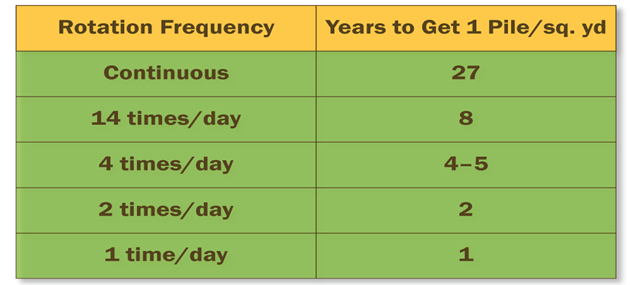Animal Role in the Nutrient Cycle
This form of grazing, known as set-stock grazing, can deteriorate soil health over time. Given the time and space, animals will selectively graze their favorite plants and return before these plants have fully recovered.6 This weakens the plant because nutrient and energy reserves are taken from the crown of the plant to jump-start above- and below-ground regrowth. These reserves are only able to be replenished once above-ground solar panels (leaves) and below-ground distribution hubs of water and nutrients (roots) have returned to full efficiency. Preferable plants on set-stock grazed pasture will be consumed repeatedly prior to their full recovery and rest, causing the plant to dig even deeper into its savings account of reserves after each subsequent grazing event. Over time, the plant can’t muster up enough energy or nutrients to regrow.
Why does this matter so much? It matters because animals have nutritional wisdom7,8 meaning that they will seek out and consume the most nutritious and medicinal plants when given the chance. Set-stock grazing puts negative selection pressure on the very plants we want to encourage, i.e. the most nutritious plants. As a result, this way of grazing leaves behind patches of overgrazed desirable plants, undergrazed less desirables and bare soil.9
That was a lot of negative talk. Let’s flip the script and talk the rest of the time about the benefits to soil health from properly managed livestock. After all, I think it’s a much better strategy long-term to be focused on moving toward the positives, rather than be fixated on avoiding the negatives!
Adaptive multi-paddock (AMP) grazing was designed as an alternative to allow plants the recovery and rest they need to flourish. AMP grazers subdivide pastures into paddocks, allowing livestock to graze an area for shorter periods of time under higher stock density. This mimics the large herds of grazing animals that used to move across the landscape. In essence, we are behaving like the predators that kept them moving in tight groups. Research and real-world results indicate that this form of animal impact greatly increases soil health.
First, AMP grazing increases soil organic matter levels. Research shows this to be true compared to conventional set-stock grazing
AMP grazing supports larger, more diverse microbial populations (https://www.tandfonline.com/doi/abs/10.1080/21683565.2019.1591564)


to the soil create the macroaggregates that provide the heterogeneous conditions needed for different plants to germinate that are contained within the latent seed bank. Livestock typically excrete 50-90% of the nutrients they are fed and fully-grown animals that are not gaining weight, gestating or producing milk or eggs excrete almost all of the nutrients they are fed. (https://www.gov.mb.ca/agriculture/environment/nutrient-management/pubs/properties-of-manure.pdf)